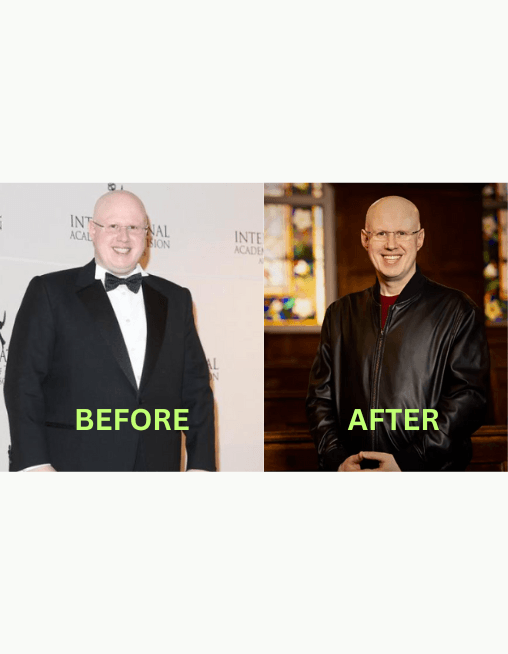Does Body Dysmorphia Persist After Weight Loss?


Related products
Body Dysmorphic Disorder (BDD), commonly referred to as body dysmorphia, is a mental health condition where a person spends a lot of time worrying about flaws in their appearance. These flaws are often unnoticeable to others. In the context of weight loss, this condition presents a unique paradox. The physical transformation intended to enhance self-image and confidence can, paradoxically, lead to or exacerbate body dysmorphia. This article aims to delve into whether body dysmorphia persists after weight loss and the various factors influencing this phenomenon.
Understanding the intricate relationship between body dysmorphia and weight loss is crucial. It's not just about the physical transformation but also the psychological implications that accompany it. Does the achievement of a weight loss goal alleviate the symptoms of body dysmorphia, or does it, in some cases, intensify them? This is a central query that this article seeks to explore, considering expert opinions, statistical data, and real-life case studies.
What is Body Dysmorphia?
Body Dysmorphic Disorder is characterized by a preoccupation with one or more perceived defects or flaws in physical appearance, which are not observable or appear slight to others. Dr. Emily Harris, a leading psychologist specialising in body image disorders, explains, "BDD is often misunderstood. Patients are not merely 'vain' or 'self-obsessed'; they are experiencing a serious mental health issue where their perception of themselves is significantly distorted." This distortion can lead to significant distress and difficulties in daily functioning.
The psychological and emotional components of BDD are profound. Individuals may experience intense anxiety, shame, and even depression due to their perceived physical shortcomings. Statistically, BDD affects about 1-2% of the population, with a higher prevalence among those with a history of depression or social anxiety disorder. It's also important to note that BDD can affect all demographics, although it commonly develops in adolescents, a group particularly vulnerable to body image concerns.
What is the Relationship Between Weight Loss and Body Image?
The journey of weight loss is often embarked upon with the expectation of enhanced self-esteem and body satisfaction. However, the reality can be markedly different for individuals with body dysmorphia. The anticipated psychological satisfaction may not materialize even after significant weight loss. Dr. John Martin, a bariatric surgeon, notes, "Many of my patients expect that shedding excess weight will resolve their body image issues. However, in cases of BDD, the internal perception of body image might not change in tandem with the physical changes."
Case studies in this realm reveal a complex picture. A study conducted by the University of Manchester found that out of 200 patients who underwent bariatric surgery, nearly 30% showed no improvement in their body image satisfaction, suggesting a persistent disconnect between physical change and mental health.
What is Body Dysmorphia After Weight Loss?
Investigating whether body dysmorphia persists after weight loss is pivotal. Factors such as the extent of weight loss, the duration of BDD symptoms before weight loss, and the individual's overall mental health play significant roles. According to Dr. Harris, "In some cases, weight loss can exacerbate body dysmorphia. The individual may become more fixated on other body parts or perceive new flaws."
The role of mental health and self-perception in this context is complex. It's not merely the physical transformation that dictates the outcome but also the psychological readiness and support received during the weight loss journey. Therapy and counselling are often crucial for individuals with BDD undergoing weight loss, as they address the underlying psychological issues.
In conclusion, the persistence of body dysmorphia after a person has lost weight is influenced by a multitude of factors, including pre-existing mental health conditions, the nature of the weight loss journey, and the availability of psychological support. Understanding this relationship is essential for providing holistic care to individuals seeking weight loss, especially those with pre-existing body image concerns, for example, who may see phantom fat in the mirror or in social situations.
Personal Stories and Experiences
Personal accounts provide invaluable insights into the realities of living with body dysmorphia post-weight loss. Sarah, a 35-year-old marketing professional, shared her journey, "After losing 40 kilograms, I thought I would feel elated. Instead, I found myself fixating more intensely on other body parts. It was like a never-ending cycle of dissatisfaction." Her experience underscores the persistence of body dysmorphia, despite significant physical changes.
Contrastingly, Michael, a 42-year-old teacher, had a different story. He overcame his body dysmorphia through a combination of weight loss and cognitive-behavioural therapy. "It wasn't just the weight loss but learning to change my thought patterns and perception of my body that helped me," he explained. His experience highlights the potential for recovery with the right support and interventions.
These contrasting experiences emphasize that the trajectory of body dysmorphia after weight loss is not uniform; it varies greatly depending on individual circumstances and the support systems in place.
Role of Social Media and Society
The advent of social media has significantly impacted how individuals perceive their bodies. Constant exposure to idealized and often digitally altered images can exacerbate body dysmorphic tendencies. Dr. Laura Simmons, a clinical psychologist, notes, "Social media can create and reinforce unrealistic standards of beauty, which can be particularly damaging for individuals struggling with body image issues."
Societal standards of beauty play a critical role in shaping self-perception, especially after weight loss. The societal glorification of certain body types can lead individuals to feel dissatisfied with their bodies, even after achieving significant weight loss. This dissonance between societal expectations and self-perception can maintain or even worsen body dysmorphia.
Treatment and Support
Effective treatment for body dysmorphia, particularly following weight loss, often requires a multi-faceted approach. Therapy, specifically cognitive-behavioural therapy (CBT), has been shown to be effective in addressing the distorted perceptions and maladaptive thought patterns associated with BDD. Dr. Simmons advocates for CBT, stating, "CBT can help individuals challenge and change their negative thoughts about their bodies and develop a healthier and more realistic body image."
Lifestyle changes, including regular exercise and a balanced diet, can also contribute positively, not just to physical health but also to mental well-being. Support systems, such as support groups or counselling services, provide an essential platform for sharing experiences and receiving encouragement, which can be incredibly beneficial for those struggling with body dysmorphia.
Resources and guidance for individuals suffering from body dysmorphia post-weight loss are increasingly available. Health professionals emphasize the importance of seeking help early and remind patients that body dysmorphia is a treatable condition. Websites, hotlines, and local mental health services offer avenues for assistance and information, ensuring that individuals do not have to face their struggles alone.
In conclusion, addressing body dysmorphia after weight loss involves understanding the personal experiences of those affected, acknowledging the role of social media and societal standards, and ensuring access to effective treatment and robust support systems. By adopting a comprehensive approach, individuals can be guided towards a path of recovery and self-acceptance.
People Also Ask
Is body dysmorphia common after weight loss?
Yes, body dysmorphia can be common after significant weight loss. Individuals who have undergone a dramatic transformation may still perceive themselves as overweight or may become overly focused on other perceived flaws in their appearance, despite visible changes. This distorted self or body image can persist even after losing weight and may require professional psychological support to address and to prevent potential eating disorders.
What are the 2 types of dysmorphia?
The two main types of dysmorphia often discussed are muscle dysmorphia and body dysmorphic disorder (BDD). Muscle dysmorphia, sometimes known as "bigorexia," involves an obsession with not being sufficiently muscular or lean. Body dysmorphic disorder (BDD), on the other hand, encompasses a preoccupation with one or more perceived defects or flaws in appearance, which are either minor or not observable to others.
How do people with BDD see their face?
People with body dysmorphic disorder (BDD) typically see their face in a distorted manner. They may perceive exaggerated flaws, such as irregularities in skin texture, asymmetry, or other facial features that they deem too large, too small, or misshapen. This perception is not aligned with how others see them and can lead to significant distress and an obsession with checking mirrors or avoiding them altogether.
Conclusion
This exploration into the relationship between body dysmorphia and weight loss has illuminated several key findings. Firstly, body dysmorphia, a complex mental health condition characterized by an obsessive focus on perceived flaws, can persist or even intensify after weight loss and can often occur in women. This persistence suggests that body dysmorphia is not solely a consequence of one's physical state but is deeply rooted in psychological factors.
Personal accounts and expert opinions have highlighted the varying experiences of individuals with body dysmorphia post weight loss surgery or other weight loss methods. While some, like Michael, find relief through a combination of physical changes and mental health support, others, such as Sarah, continue to grapple with the condition despite achieving their weight loss goals. These contrasting experiences underscore the individualized nature of body dysmorphia and the necessity for personalized treatment approaches.
The role of social media and societal beauty standards has been identified as a significant contributing factor to body dysmorphia in one's appearance. The continuous exposure to idealized images can exacerbate feelings of inadequacy and dissatisfaction with one’s own body. This external influence necessitates a broader societal change in how body image is portrayed and discussed.
Effective treatment for body dysmorphia, especially in the context of major weight loss, requires a holistic approach as people may experience phantom fat or imagine loose skin. Cognitive-behavioural therapy has emerged as a particularly effective method for addressing the distorted self-perceptions at the heart of body dysmorphia. Moreover, lifestyle changes, supportive environments, and a focus on overall well-being are crucial components of a comprehensive treatment plan.
It is important to stress that body dysmorphia is a treatable condition, consulting mental health professional and that support is available. Encouraging individuals to seek help and providing them with the necessary resources and support systems is essential. Healthcare providers, mental health professionals, and support networks play pivotal roles in this process.
Further research in this area is vital. Understanding the nuances of body dysmorphia in the context of weight loss can lead to more effective treatment strategies and support mechanisms. This research should aim to delve deeper into the psychological underpinnings of the disorder, explore the long-term outcomes of various treatment approaches, and assess the impact of societal and media influences on healthy body image.
In conclusion, the journey to understanding and treating body dysmorphia in the context of weight loss is ongoing. A holistic approach that addresses both the physical and psychological aspects of the condition is crucial. By continuing to explore, research, and provide support, we can move towards a future where individuals can pursue their health and exercise goals without anxiety and the shadow of body dysmorphia impeding their path to well-being and self love.




















 Rated Excellent by 26,523+ Reviews
Rated Excellent by 26,523+ Reviews